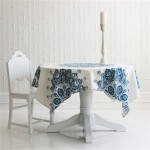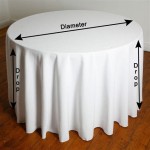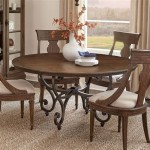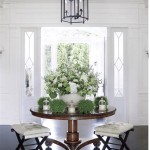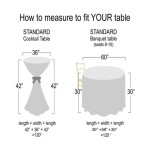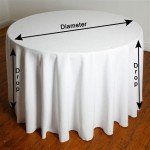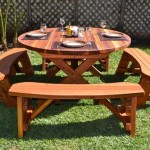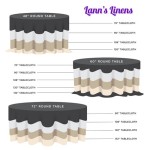Proper Use of Table Napkins in Schools and Colleges
Table manners form a crucial component of social etiquette, contributing significantly to one's overall presentation and image in various professional and personal settings. Within the framework of educational institutions such as schools and colleges, the formal education of students often overlooks the importance of teaching practical social skills, including the appropriate use of table napkins. This article aims to address this gap by providing a comprehensive guide to the correct usage of table napkins within educational environments, fostering a sense of refinement and confidence among students.
The practice of employing table napkins extends beyond mere hygiene; it symbolizes respect for oneself, fellow diners, and the environment. By understanding and applying the principles of proper table napkin etiquette, students can cultivate a polished demeanor that serves them well in formal dining situations, job interviews, and networking events. Moreover, instilling these habits early in life can contribute towards the development of a more conscientious and considerate generation.
In the context of schools and colleges, dedicated workshops, tutorials, or even integrated sessions within existing courses (such as hospitality, business, or communication studies) can be employed to impart this knowledge. These sessions could cover various aspects, including the different types of napkins, their placement on the table, and the appropriate actions to perform with them during and after a meal. Practical demonstrations and role-playing exercises can enhance the learning process and ensure that students are comfortable applying these skills in real-world scenarios.
Understanding the Napkin's Purpose and Placement
A table napkin, at its core, serves several important functions. Primarily, it is designed to protect clothing from spills and stains. Additionally, it is used to gently blot the mouth during the meal, maintaining cleanliness and preventing food particles from becoming a distraction. Furthermore, a napkin can be used to wipe one's fingers, although this should be done discreetly and sparingly. Understanding these primary uses is paramount to appreciating the importance of proper napkin etiquette.
The placement of the napkin on the table is also significant. In a formal table setting, the napkin is typically placed to the left of the forks, either folded or in a napkin ring. In some instances, it may be placed in the center of the place setting if no plate has been set. If a napkin is presented folded in a decorative manner, it is acceptable to subtly unfold it, placing it on the lap without disrupting the table setting. When in doubt, it is always wise to observe the host or hostess for cues on how to proceed.
Variations in napkin placement might occur depending on the formality of the occasion. At a less formal setting, the napkin might be placed in a glass or simply lie folded on the plate. Regardless of the specific placement, the principle remains the same: the napkin is readily accessible for use throughout the meal. Understanding these nuances can help students navigate various dining situations with confidence.
Upon being seated, the first action should be to place the napkin on the lap, unfolded. This signals that the guest is ready to begin the meal. The size of the napkin largely dictates how it should be positioned. Larger napkins should be fully unfolded, while smaller napkins, often used at less formal meals, can be folded in half lengthwise before being placed on the lap. This simple act demonstrates attentiveness and respect for the meal being offered.
Napkin Etiquette During the Meal
The proper use of the napkin during the meal is crucial for maintaining a polished and refined demeanor. The napkin should be used frequently to blot the mouth, particularly before taking a drink. This prevents unsightly food particles from being transferred to glasses or cups, demonstrating consideration for others at the table. Blotting, rather than wiping, is the preferred method, as wiping can be perceived as impolite and excessive.
If it becomes necessary to leave the table temporarily during the meal, the napkin should be placed on the chair. This indicates to the waitstaff that the guest intends to return. Placing the napkin on the table while leaving suggests that the guest has finished their meal, which may prompt the waitstaff to clear the setting prematurely. This simple gesture prevents any misunderstanding and maintains the flow of the dining experience.
In the unfortunate event of a spill, the napkin should be used immediately to discreetly blot the affected area. Apologize briefly for the mishap, but avoid drawing undue attention to it. If the spill is significant, request assistance from the waitstaff. Under no circumstances should the napkin be used to aggressively scrub the spill, as this could worsen the situation. A gentle blotting motion is sufficient to absorb the liquid and minimize the damage.
Furthermore, the napkin should not be used to clean cutlery, glasses, or other items at the table. If cutlery is visibly soiled, politely request a replacement from the waitstaff. Similarly, a soiled glass should be quietly brought to the attention of the staff. Using the napkin to clean these items is considered inappropriate and signals a lack of confidence in the service being provided.
The use of a napkin also extends to dealing with unwanted items in the mouth, such as a bone in fish or a seed in fruit. Instead of spitting the item directly onto the plate, the diner should discreetly use the napkin to remove it from the mouth and then place it on the plate. This action should be done as unobtrusively as possible to minimize disruption to the meal. Avoiding any unnecessary display maintains a sense of decorum and consideration for fellow diners.
Signaling the End of the Meal
Signaling the completion of the meal is another important aspect of table napkin etiquette. At the end of the meal, the napkin should be loosely folded and placed to the left of the plate. This signals to the waitstaff that the guest has finished eating and that the plate can be cleared. While there is no need to meticulously fold the napkin, it should be presented in a neat and tidy manner. Avoid crumpling or wadding the napkin, as this can be perceived as disrespectful.
In more formal settings, the host or hostess will typically be the first to place their napkin on the table, signaling the end of the meal. Guests should observe this cue and follow suit, placing their napkins on the table only after the host or hostess has done so. This demonstrates respect for the host's role and ensures that everyone is aware of the progression of the meal.
The specific way in which the napkin is placed can also convey certain messages. A neatly folded napkin suggests that the meal was enjoyable and that the guest appreciates the hospitality. Conversely, a carelessly crumpled napkin might be interpreted as a sign of dissatisfaction. While it is not necessary to overthink the positioning of the napkin, a little attention to detail can contribute to a positive impression.
It is also important to note that the napkin should never be left on the chair after the meal has concluded. This suggests that the guest intends to return, which is inappropriate once the meal is finished. Always place the napkin on the table to the left of the plate to avoid any confusion or miscommunication.
In educational settings, these three key points provide a foundational understanding of proper napkin usage. By integrating these principles into the curriculum and practicing them in realistic scenarios, schools and colleges can equip students with valuable social skills that will benefit them throughout their lives. The ability to confidently navigate formal dining situations not only enhances one's personal presentation but also opens doors to opportunities in various professional fields.
Cultivating these habits early in life helps students develop a sense of refinement and confidence, which are essential qualities for success in a competitive world. Furthermore, teaching proper table etiquette promotes a culture of respect and consideration within the educational environment. It emphasizes the importance of treating others with courtesy and adhering to social norms that contribute to a harmonious and enjoyable dining experience for all.
Therefore, the incorporation of practical lessons on social etiquette, specifically focusing on the proper use of table napkins, is a valuable investment in the overall development of students in schools and colleges. It prepares them not only for academic and professional success but also for navigating social situations with grace and confidence.

8 Ways To Use A Napkin With Proper Table Etiquette Wikihow

Table Etiquette The Place Setting Rooted In Foods

Table Manners The Napkin Rooted In Foods

Table Etiquette The Place Setting Rooted In Foods

How To Fold A Napkin For Table Setting
Have You Been Using Your Napkin Wrong This Whole Time

Table Etiquette The Place Setting Rooted In Foods

How To Fold A Napkin For Table Setting

Saving Money With Cloth Napkins Andrea Dekker

How To Fold A Napkin For Table Setting
Related Posts

